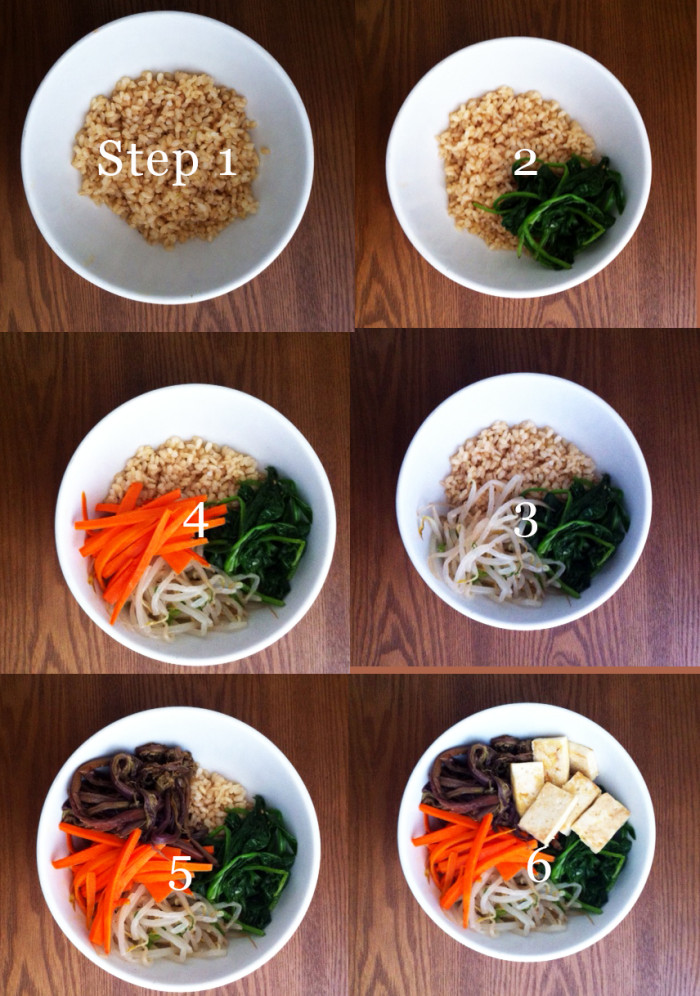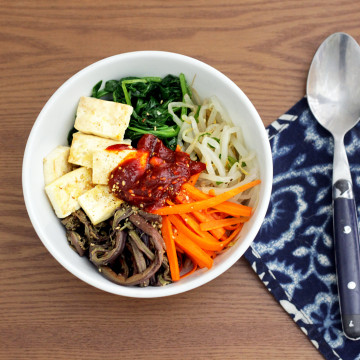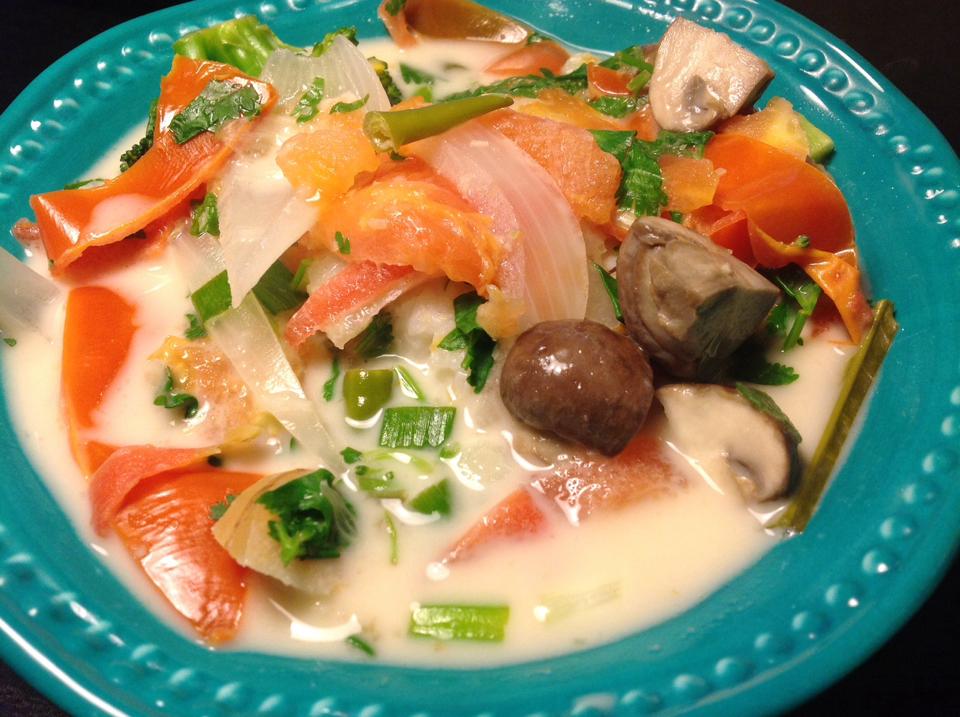A while ago my mom visited from Portland, Oregon. She brought with her one of my favorite childhood treats–fern. Yes, instead of fries and mac n’ cheese, I grew up loving sauteed fern. All great except what she pulled out of her suitcase was dried fern that looked nothing like the finished product.
“Where did you get these?” I asked. She was sauteing some perfectly, beautifully julienned radishes.
“Oh we went to pick them in the mountains. There are secret places that only the Koreans know. I picked a whole backpack full. Then dried them, then boiled them, drained them, dried them again.”
“So how do I prepare this? And did you use a mandolin to cut those radishes?”
“Just soak in water for several hours, boil them, then drain, then saute in soy sauce, garlic, sesame oil. It’s really easy. No I just hand cut these,” She said. Five minutes later, my sister came into the kitchen, wondering, “Mom, did you use a mandolin?”
Despite the warning signs, I was determined to make the fern so that Mom’s heroic efforts to feed her children are not in vain. Furthermore, I wanted to make vegan bibimbap, which you surely have seen on menus of Korean restaurants everywhere. Authentic bibimbap will always feature the sauteed fern, though in America you see anything from sauteed zucchini to even avocado slices. I rather enjoy different variations, but this time I stuck to the most traditional veggies.
Making the bibimbap, like all Korean dishes, requires no special skills or tools, except a ruthless, cold desire to blanch, dress and stir-fry all manner of vegetables–separately. It’s going to test your boundaries as a cook, maybe as a human being. Your arm will start to feel weak toward the end of sauteing carrots and you’ll think to yourself–I can’t do this. And then at the end of it all, you’ll put all the vegetables one by one in your rice bowl like this:
….so beautiful, isn’t it? But then this is the final coup. Right before eating, you mix it all with a dollop of Korean hot pepper sauce, obliterating your art. After all, bibimbap means “mixed up rice.” So why, why do you have to prepare all of them separately?? It really requires a very Zen attitude. But the reward of all that labor was the best-tasting bibimbap I ever tasted. (If you don’t have a Korean mother who knows the secret mountains where the fern grows, you can also buy the sauteed fern in Korean supermarkets. Actually, they sell the bibimbap veggies so all you need to do is cook the rice. But then where is the fun?)
Authentic Vegan Bibimbap
Makes many bowls (3-4)
Sauteed fern (see below)
1 bunch spinach, washed and trimmed
1 package mung bean sprouts (or soybean sprouts), washed and trimmed
1 medium carrot, cleaned and julienned
1/2 block extra firm tofu, cut into dominoes
about 6 cloves garlic, minced
1 green onion, chopped
2 cups cooked brown rice
2-3 tbsp sesame oil
about 1 tbsp cooking oil (I used canola) for stir frying
3 tbsp Korean hot pepper paste (gochujang, available in many supermarkets and Asian stores)
toasted sesame seeds (for garnish)
salt and pepper
1. Mung bean sprouts: Boil in water for about 5-7 minutes until just tender. Drain thoroughly using a colander. Move to a large bowl. Using a pair of chopsticks, dress with about 2 tsp sesame oil, salt, pepper, about 1 minced garlic clove, 1 tsp green onions. Set aside on a plate.
2. Spinach: Blanch in boiling water for no longer than 15 seconds and drain using colander. Run under cold water immediately, then squeeze out all the water. In the same large bowl that you used for sprouts, dress using the same exact ingredients. Move to the plate next to the sprouts (but don’t mix them together!).
3. Carrots: Heat 1 tbsp oil in a large wok or frying pan over medium heat. Add carrots and saute for about 5-6 minutes until done. Set aside.
4. Tofu: Using the same frying pan, pan fry until golden crispy, about 4 minutes on each side. Season with salt and pepper, then set aside.
5. Hot pepper paste sauce: In a small bowl, whisk 3 tbsp hot pepper paste with 1 tbsp sesame oil.
6. Fern: the mother of all difficult vegetables. If you got the dry ones, soak them in water for about 4-5 hours until completely reconstituted. Drain. Boil in water for about 30-45 minutes until these suckers are completely limp. Drain. Then saute in soy sauce (to taste), 3-4 cloves minced garlic, and sesame oil (also to taste) for about 5 minutes.
7. Assemble all of the above over a bowl of brown rice. Admire for a few seconds and then mix it all together with a spoon, then eat it!
Also see: Vegan Japchae (Korean Glass Noodles)
Vegan Doenjang Jjigae and Sauteed Sesame Leaves
Vegan Sushi Bowl with Carrot Ginger Dressing
Love this article? Keep up-to-date on the latest from Peaceful Dumpling: Subscribe to our Newsletter!
__
Photo: Peaceful Dumpling








